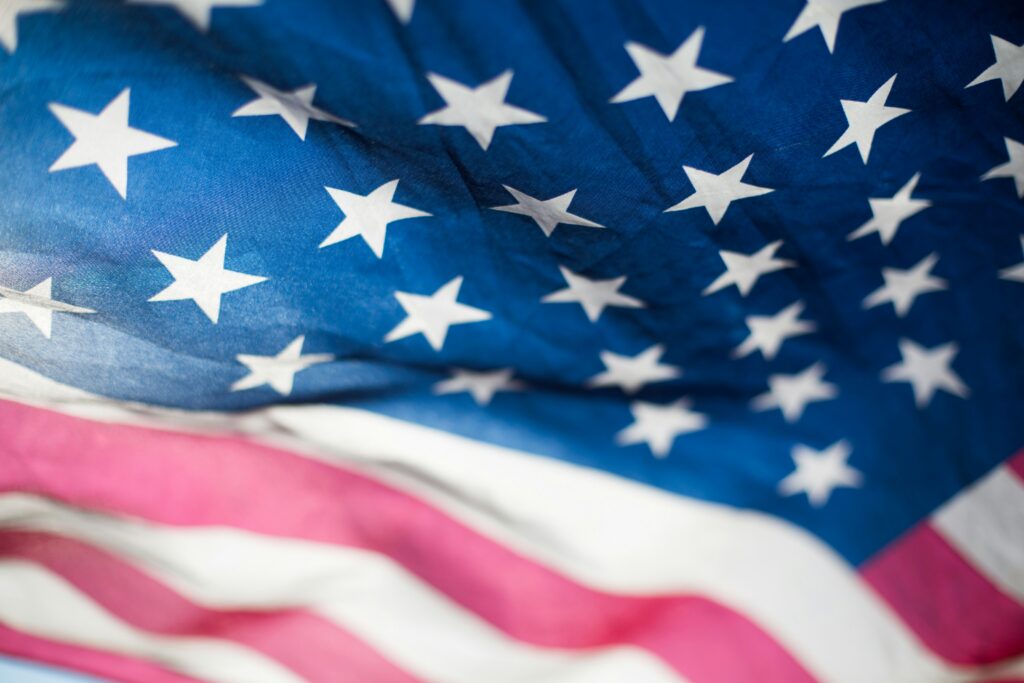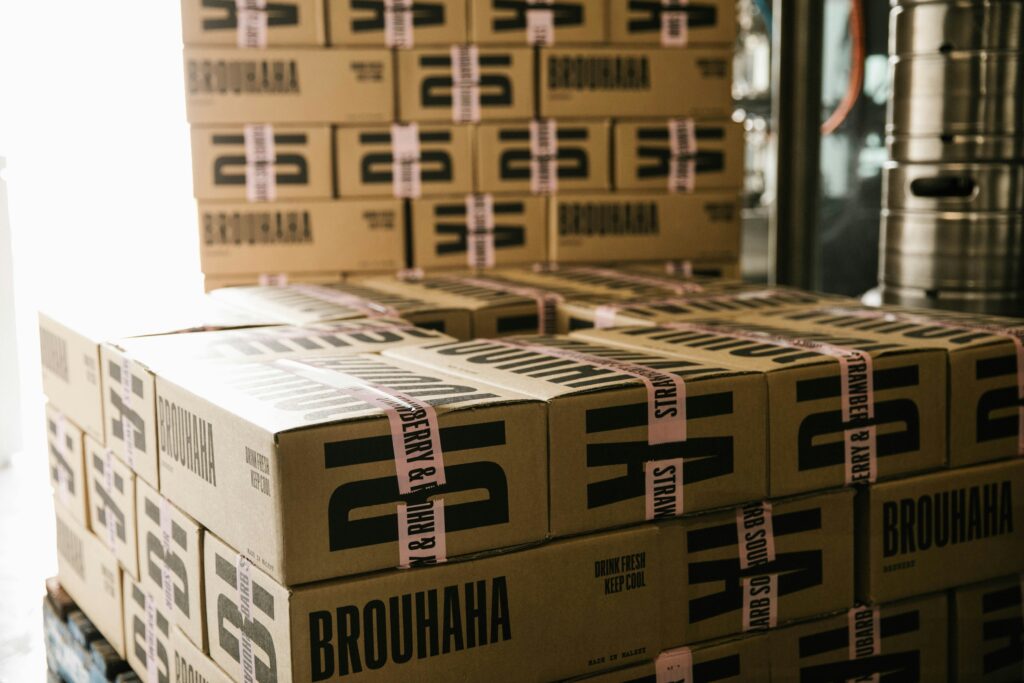Prioritising product classification means stock arrives in time for Summer
Topics
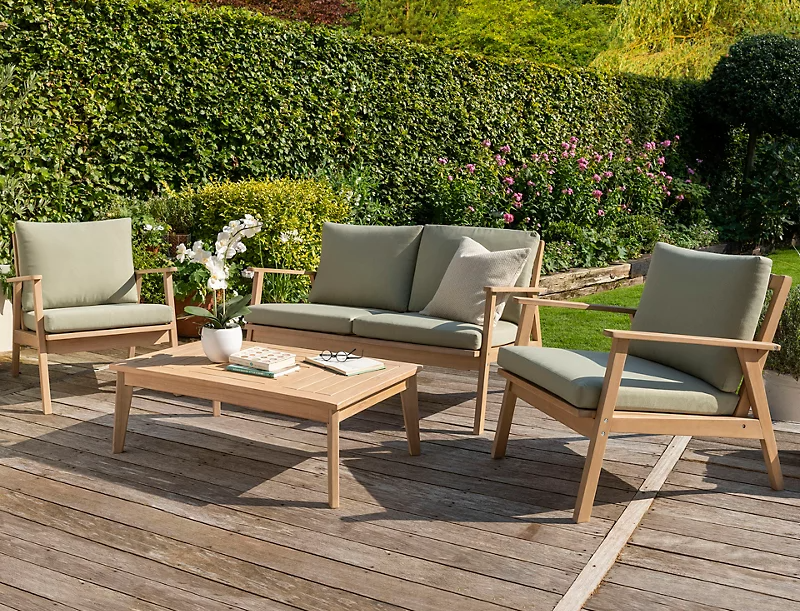
With the weather improving and BBQ season approaching, retailers are gearing up to ensure demand is met for a rush on garden furniture and outdoor entertaining supplies this Summer season.
Unlike previous years when demand far out stripped supply and getting hold of a comfy outdoor sofa meant a wait of 6+ months, savvy retailers like M&S are more than prepared this year, knowing developments they’ve made in digitising their supply chain will stand them in good stead to cater for all demands this Summer. And with families and friends getting outside for the King’s Coronation, many have been getting their gardens ready even earlier this year.
Why prioritise customs classification
Classifying Summer products correctly is an important step in the buying process to ensure goods arrive in time for the Summer rush. Our customer M&S has been using our automated customs classification solution TariffTel for numerous years to assign tariff codes correctly and ensure compliance in customs procedures every time. Not only are they kept automatically up to date with changes to the HS code system, as and when they are made, but our expert team works with them throughout the year to solve potentially complex classifications.
We’ve talked previously about how a gold leaf chocolate carrot at Easter presented a few challenges when classifying, in this blog, we speak to Daniel Mcmenemy, one of our customs classification experts, to look at some popular outdoor Summer products which require some special consideration when classifying this year.
Classifying garden furniture
Garden furniture is often top of people’s wish list in Summer. How easy is it to classify garden sets like sofas, tables and lounge seats? When it comes to classifying garden furniture, the type of material used is generally not a major factor as most garden furniture can be classified under heading 9401/9403. This heading is focused on whether the product is made of wood, metal or plastic, and where it is used, such as in an office, kitchen, or bedroom. However, the classification of garden furniture can become more complex when dealing with product sets that include multiple items, such as a sofa, chair, and table.
In such cases, determining the appropriate classification requires us to identify the essential character of the product. This means understanding which item in the set imparts the essential function or purpose of the product. This can be determined by analysing the primary use of the set and the relative value of the items in question. By identifying the essential character of the product, you can ensure that it is classified correctly and avoid any issues during the customs clearance process.
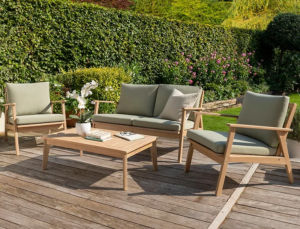
In the case of this sofa, chair and table set from M&S, the sofa/chair and table are classifiable to different chapters in the tariff, however as they all serve the same function, they could be classified under one heading which imparts the essential character. To determine this, we can look at the primary use of the set, as well as looking at the value of the items in question. For example, if the value of the sofa outweighs that of the table, the classification would be against the sofa, and vice versa if the table was the higher value.
Classifying multi-use fire pits
A cross between a fire pit and a table typically means that this dual-use item is classified according to its essential characteristic – the fire pit, rather than the table.
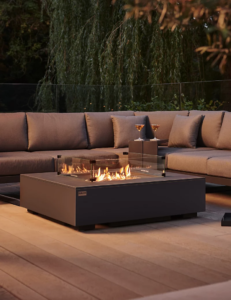
Let’s take the example of this M&S product which is particularly intriguing as it presents a unique classification challenge due to its multifunctionality. It can function both as a table and a steel burner, and following the General Rules of Interpretation it would be classified based on the heading that provides the most specific description or, failing that, the heading that covers its essential characteristic. In this case, the product is primarily described as a firepit, with the added benefit of being a versatile piece that can also function as an outdoor coffee table. Additionally, the value of the firepit far outweighs that of the surrounding table. As a result, we would classify this product as a firepit, as it provides the primary function of the item, while the table serves as a secondary feature. Keeping all of these factors in mind can help ensure accurate classification of multi-use products.
Classification of outdoor lighting – Increases in solar-powered and LED
To understand how the tariff changes over time, let’s take a closer look at this example: solar-powered lighting.
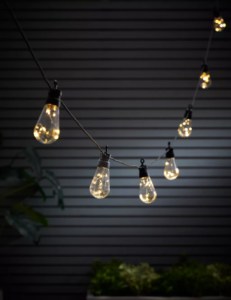
Historically, prior to 2022, the tariff did not provide specific provisions for solar energy-powered lights. However, with the recent five-year update to the Tariff in 2022, there are now specific headings for “Photovoltaic” lighting. It is important to note that these headings only apply when the photovoltaic lighting is designed solely for use with LEDs. This change in focus towards LEDs within the Tariff is also noteworthy, as they were not as frequently mentioned before the 2022 update. When it comes to lighting, there are several considerations to keep in mind, such as the location, the light’s intended use, the power source, the material, and whether it is exclusively usable with LED light sources.
What’s the HS code for bunting?
Many people like bunting in their gardens all year round, and the King’s Coronation means we are seeing it even more.
The classification of bunting is typically straightforward, falling under heading 9505 as a “Festive, carnival or other entertainment article.” However, this classification only applies to bunting made of non-durable materials like paper or plastic. If the bunting is constructed from a more durable material, such as woven cotton like in this particular case, it falls under a different heading.
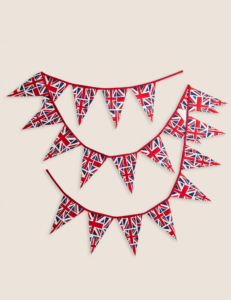
In this instance, the appropriate classification for the cotton bunting would be under heading 6307 as an “Other made up Textile Article.”
During peak sales seasons, it is vital your business is prepared for the complexities that classification can throw up. Whether you’re a growing business, or a larger enterprise, implementing an intuitive, automated system like TariffTel for customs classifications can significantly reduce the time required to classify products and facilitate communication between vendors. This can mean the difference in getting the up-to-date information you need to classifying product quickly and compliantly.
If you have a question about classification, get in touch with our expert team. Don’t’ forget to follow us on LinkedIn for more classification updates.
Other Useful Resources
30% US tariffs set for EU goods – what’s the impact
One of the sharpest unilateral trade actions in recent years is currently heading our way on 1st August 2025 with Presid...
The end of US de minimis – what’s next?
Significant trade news from the US this month with President Trump signing into law the “One Big Beautiful Bill” (OB...
How to avoid overpaying customs duty & classify smarter
Your how-to guide to tariff code accuracy If you handle HS, HTS, tariff or commodity codes, this how-to guide...
